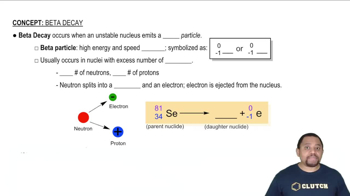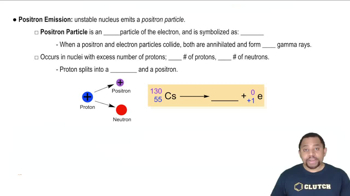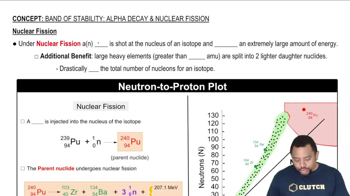Here are the essential concepts you must grasp in order to answer the question correctly.
Beta Decay
Beta decay is a type of radioactive decay in which a nucleus emits a beta particle, which is an electron or a positron. In beta minus decay, a neutron is converted into a proton, increasing the atomic number by one, while in beta plus decay (positron emission), a proton is converted into a neutron, decreasing the atomic number by one. This process helps the nucleus achieve a more stable configuration.
Recommended video:
Positron Emission
Positron emission, also known as beta plus decay, occurs when a proton in the nucleus is transformed into a neutron, resulting in the emission of a positron (the antimatter counterpart of an electron). This process decreases the atomic number of the element by one, leading to the formation of a different element. Positron emission is common in isotopes that are proton-rich and seek stability.
Recommended video:
Nuclear Stability and the Band of Stability
The band of stability is a region on a graph of neutron number versus proton number where stable nuclei are found. Nuclei outside this band are unstable and tend to undergo radioactive decay to achieve stability. The type of decay (beta decay or positron emission) depends on the ratio of neutrons to protons; if a nucleus has too many protons, it may undergo positron emission, while too many neutrons may lead to beta decay.
Recommended video:
Band of Stability: Nuclear Fission
 Verified step by step guidance
Verified step by step guidance


